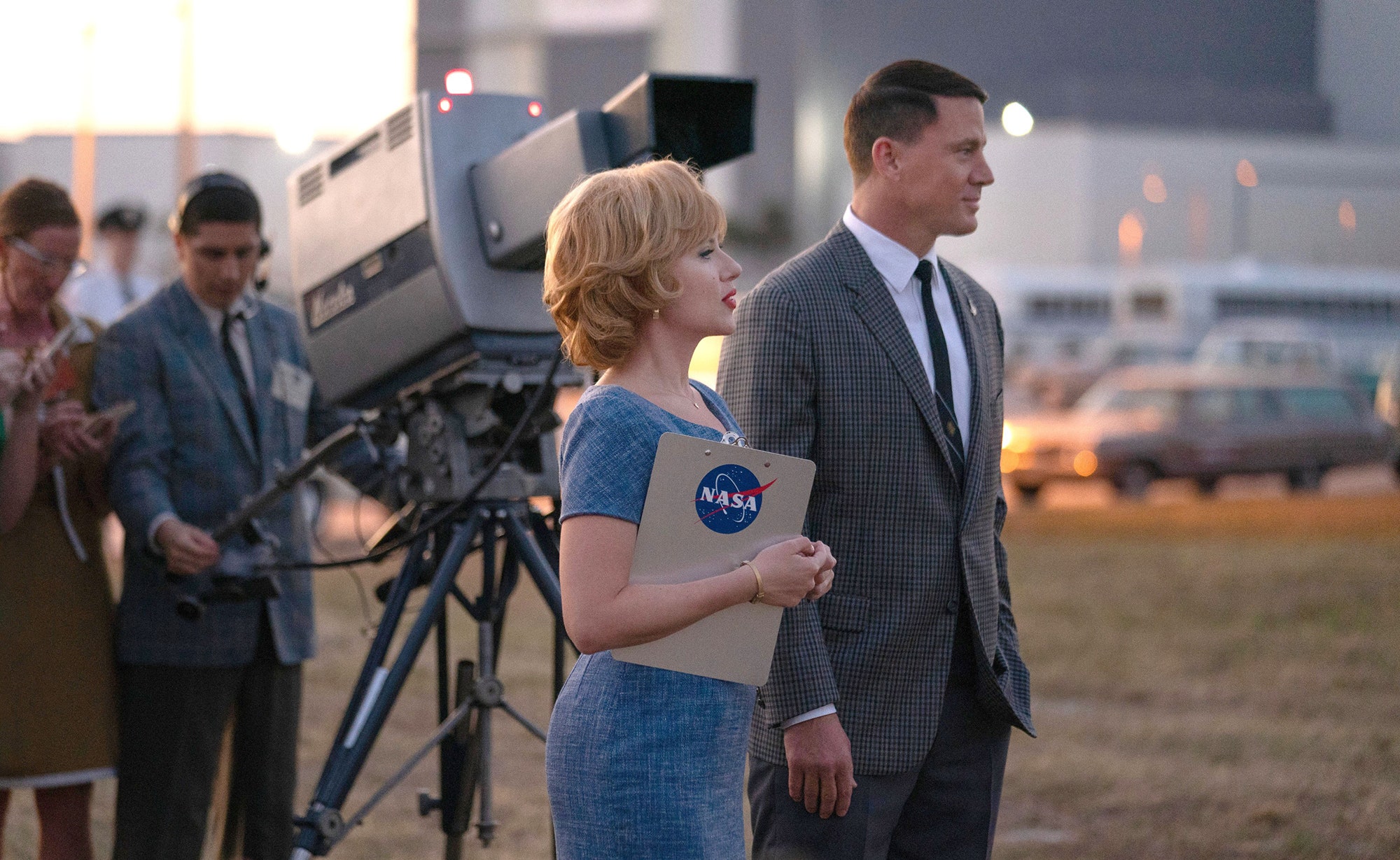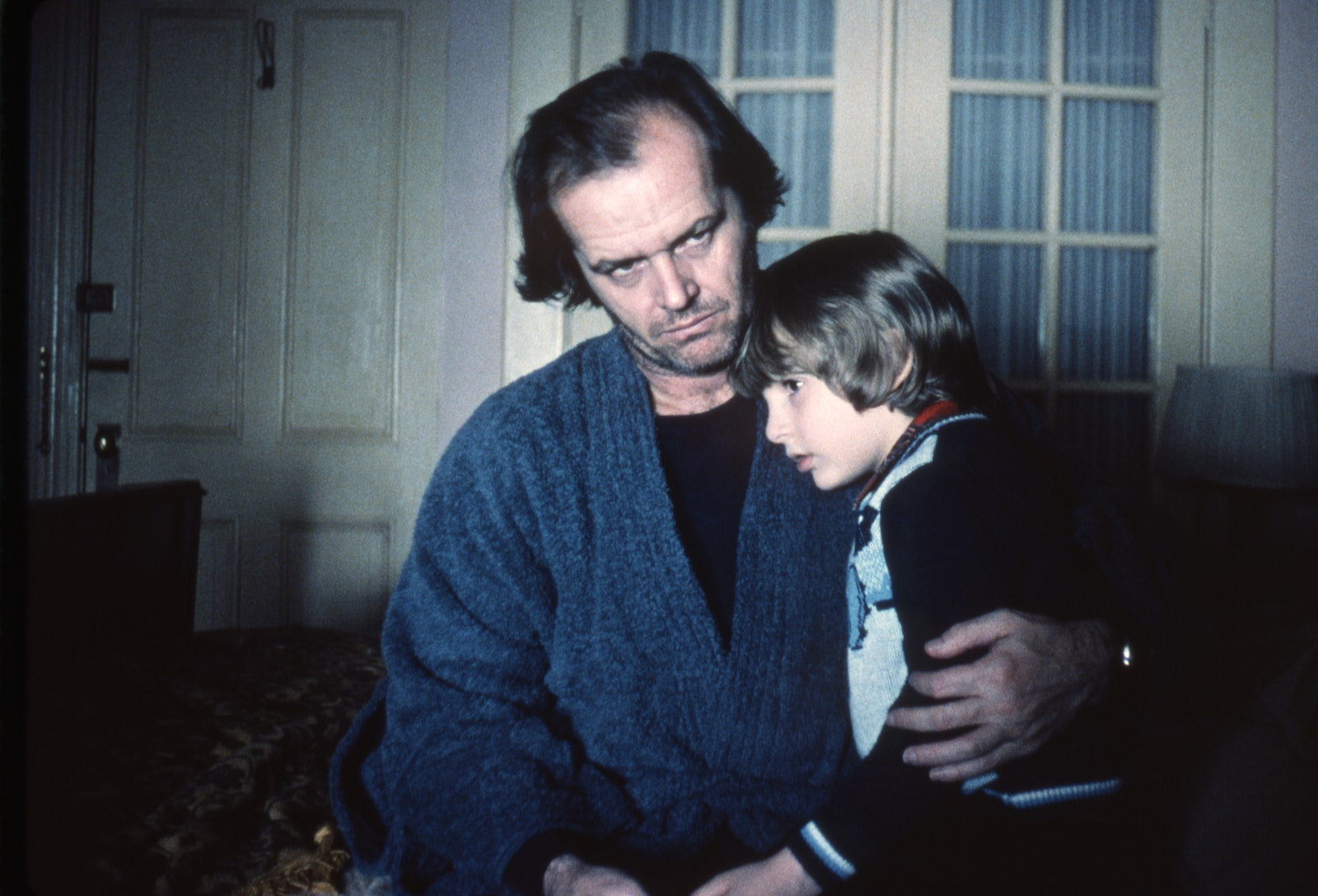‘Fly Me to the Moon’: How a Stanley Kubrick Conspiracy Theory Inspired the Film
Scarlett Johansson’s Kelly Jones—a marketing specialist who uses everything from a fake baby bump to a phony Southern drawl to close a deal—can sell anything. At least, that’s what the Nixon administration is banking on in the new film Fly Me to the Moon, which puts a screwball-comedy spin on the space race. Kelly is poached by Nixon operative Moe Berkus (Woody Harrelson) to peddle the Apollo 11 space mission being led by NASA launch director Cole Davis, played by Channing Tatum.
“I am not turning this ship into a flying billboard,” says Tatum’s Cole, a character inspired by real-life Air Force pilot turned NASA employee Deke Slayton. But he’s living in an era long before billionaire-funded space travel at a time when all cosmic exploration required government support. As such, NASA has to sell the American public—and skeptical politicians, one of whom is played in the film by Johansson’s real-life husband Colin Jost—on space travel.
This part of the film is very true to life. “I believe the marketing aspect of Apollo was as important as the spacecraft, I absolutely do,” marketing strategist and author David Meerman Scott told The New York Times in 2019. Some of the gonzo tactics Kelly uses are based in fact as well: companies like Kellogg’s and Omega actually did partner with NASA for certain sponsorship opportunities. Other plotlines, like her hiring charismatic actors to pose as NASA engineers for onscreen interviews, never happened (probably). There’s also no evidence that Neil Armstrong was pitched ideas for what to say when he first touched down on lunar land—though in the film, even Kelly admits that “one small step for man, one giant leap for mankind” is better than any sound bite she would have drafted.
Another crucial element in rallying support was the decision to attach a camera to the exterior of Apollo 11, bringing the launch to the largest possible audience. According to Astronomy, NASA’s communications team had to argue in favor of the broadcast, as “some engineers worried that developing that equipment would distract from efforts to achieve a lunar landing.” But the marketing and filming of man’s trip to the moon “was absolutely essential for us to have been able to do that program,” said Scott.
But here’s where things get hairy. In Fly Me to the Moon, the Nixon administration gets anxious about Apollo 11 and devises a backup plan in case it fails. It is called Project Artemis (which was the film’s original title back when Chris Evans was attached to star with Jason Bateman directing), and it involves staging a fake moon landing that will be broadcast on TV should the real mission fail. “This is not a space race, but a battle for which ideology gets to run this country,” Moe tells Kelly. She reluctantly agrees to the ruse and enlists director Lance Vespertine (Jim Rash), whom she refers to as the “Kubrick of commercials,” for the assignment of a lifetime.
This is an obvious nod toward the very much debunked, yet somehow still long-standing, conspiracy theory that Stanley Kubrick actually staged the moon landing. That notion, which was unpacked in a 2022 short film as well as in the 2012 documentary Room 237, goes something like this:
A year after employing aeronautics specialists and aerospace engineers to design spacecraft interiors for his 1968 film 2001: A Space Odyssey, Kubrick was allegedly recruited to shoot a falsified Apollo 11 landing. Much of the so-called evidence to support this theory can be “found” in Kubrick’s The Shining, which some have interpreted as the director’s confession for faking the moon landing. Conspiracy theorists point to “evidence” like the “Apollo” sweater Danny Torrance wears and the key to the Overlook Hotel’s “Room No. 237,” the letters of which can be rearranged to spell “Moon Room.” Kubrick’s daughter Vivian has publicly denied the theory, calling it “manifestly a grotesque lie.”
Conspiracy theories related to the moon landing have existed for decades. In 1976, Bill Kaysing, one of the first prominent moon landing deniers, self-published a book called We Never Went to the Moon: America’s Thirty Billion Dollar Swindle. Nearly 28% of Americans agreed with his ideas at the time, according to one 1976 Gallup poll. 1978 saw the release of Capricorn One, a fictional film in which a journalist (Elliott Gould) uncovers a government hoax about landing on Mars, which features O.J. Simpson as one of the astronauts. In 2002, a then 72-year-old Buzz Aldrin, the second man to touch down on the moon, punched conspiracist Bart Sibrel in the face for calling the astronaut a “coward,” “liar,” and “thief” outside a Beverly Hills hotel. Sibrel later attempted to press assault charges against Aldrin, but the court dismissed the case.
Given this history of dangerous misinformation, Greg Berlanti, who directs Fly Me to the Moon from a screenplay by Rose Gilroy (Keenan Flynn and Bill Kirstein are credited with the story), wanted to responsibly toy with the idea of recreating the moon landing. “I’m not sure I would’ve signed on if I didn’t know that NASA was as much a fan of the story as I was,” he told Deadline. “It’s impossible in this day and age to do a story surrounding one of the OG conspiracy theories without being cognizant of the fact that we live in this hyper-politicized time. As much as it celebrates NASA and really honors what was achieved, the movie has something to say about why the truth is important, and it’s done in a fun way.”
In the movie, the staged version of the moon landing is filmed unbeknownst to NASA, which may account for the organization’s approval. Some of the scenes were even shot on location at Kennedy Space Center in Florida.
Spoiler alert: In the film, the moon landing happens for real—rendering use of the re-creation unnecessary. Moe subsequently instructs that any documents related to the falsified version are shredded. “Your name will be wiped from the history books,” he says, “the story rewritten.”
In reality, there is no basis to believe such a cover-up ever actually happened. As the film notes, more than 400,000 people worked for over a decade on the Apollo 11 mission. The sheer scale of the project indicates how unlikely (and difficult) it would be to fake the desired outcome. “If in fact the main motivation for believing in the moon hoax is that you don’t trust the government, you don’t trust our leaders, you don’t trust authority, how can you feel that 400,000 people would keep their mouths shut for 50 years?” astronomer Rick Feinberg, then a press officer for the American Astronomical Society, asked History in 2019. “It’s just implausible.”





